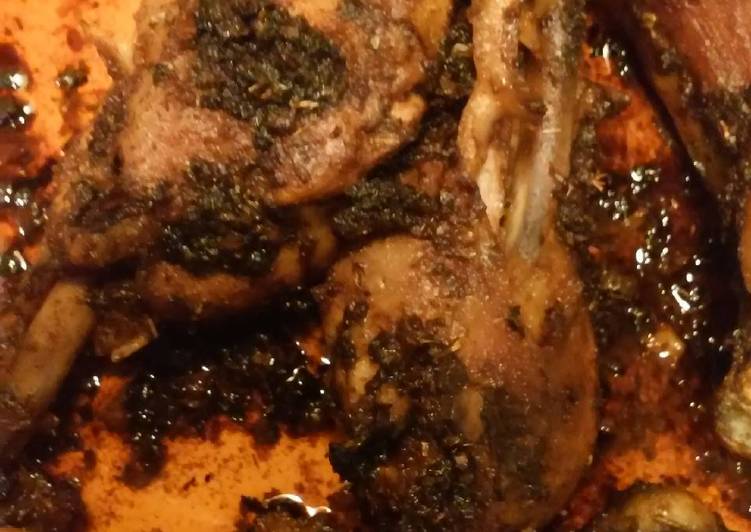Garlic & Smoked paprika chicken. Highest quality, reasonable price, really the Best! Check Out Top Brands On eBay. Overview Information Garlic is an herb that is grown around the world.
 Garlic is a commonly used food and flavoring agent.
When used as a food product, garlic is not likely to produce health benefits or side effects.
When used as a medicinal product, garlic may produce both desired and unwanted effects on the body.
You can have Garlic & Smoked paprika chicken using 9 ingredients and 5 steps. Here is how you cook that.
Garlic is a commonly used food and flavoring agent.
When used as a food product, garlic is not likely to produce health benefits or side effects.
When used as a medicinal product, garlic may produce both desired and unwanted effects on the body.
You can have Garlic & Smoked paprika chicken using 9 ingredients and 5 steps. Here is how you cook that.
Ingredients of Garlic & Smoked paprika chicken
- You need of chicken drumsticks, skin removed.
- You need of olive oil.
- Prepare of garlic cloves, minced.
- It's of smoked paprika.
- Prepare of parsley, fresh and chopped.
- Prepare of red pepper flakes.
- You need of oregano, fresh and chopped. You can use 1 1/2 T dry oregano.
- You need of salt.
- You need of pepper.
Garlic (Allium sativum) is a species in the onion genus, Allium. Its close relatives include the onion, shallot, leek, chive, and Chinese onion. It is native to Central Asia and northeastern Iran and has long been a common seasoning worldwide, with a history of several thousand years of human consumption and use. It was known to ancient Egyptians and has been used as both a food flavoring and a.
Garlic & Smoked paprika chicken step by step
- Preheat oven to 425°.
- Dry chicken off and sprinkle with salt and pepper..
- Heat olive oil in a small pan. Add the garlic, smoked paprika, red pepper flakes and herbs. Cook for 1 minute, don't burn garlic..
- Pour mixture over chicken and coat well. Use gloves to handle chicken..
- Place in a 9 x 13 baking pan and bake for 40-45 minutes. Serve..
Garlic belongs to the genus Allium and is closely related to the onion, rakkyo (an onion found in Asia), scallion, chive, leek, and shallot. It has been used by humans for thousands of years and. The dates to plant garlic vary widely. To grow big garlic bulbs, we typicall plant the cloves in late autumn. Garlic roots develop during the fall and winter—before the ground freezes—and by early spring, they start producing foliage.